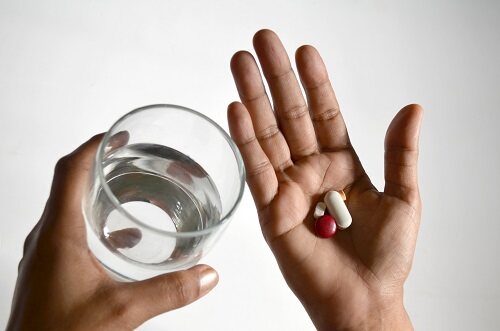Medicine can be a double-edged sword. If the drug is used reasonably, it can cure the disease; on the contrary, it can not cure the disease, but also affect the health of the body. According to the survey, drug errors accounted for 18.3% of medical errors in developed countries. Only by taking the medicine properly and reasonably can it be avoided and reduced.
Oral administration is a safe, convenient and economical method. Capsules, pills, granules, etc. are all common oral medications in daily life. After oral administration, the drug acts on the whole body through absorption through the gastrointestinal tract, or stays in the gastrointestinal tract to act on the gastrointestinal tract. In the work of pharmacy service, it is found that if the correct use of oral administration is not truly grasped and paid attention to, it will lead to a decrease in the efficacy of the drug or an increase in the incidence of adverse reactions.

Correct medication interval
The time interval between medications is close to the half-life of the drug, which refers to the time required for the concentration of the drug in the blood to decrease by half. When the concentration of the drug in the blood is lower than the concentration of the half-life, the therapeutic effect is not obtained. With the exception of a few drugs with a short half-life or very long duration, most medications have a dose interval equal to about one half-life. Patients should take the drug in divided doses as required. The time of taking the drug four times a day should be 6 hours at a time. The time taken three times a day should be 8 hours at a time interval, and the daily dose should be 12 hours at a time.
No matter how many times a day, the patient should pay attention to a little activity before resting in bed. When taking the medicine, it is advisable to be sent with enough water to avoid causing drug-induced peptic ulcer.
Correctly handle the time between medication and meals
In addition to understanding the half-life of the drug, it should also grasp the fluctuation of blood drug concentration, combined with the changes of pathological activity and the biological rhythm of the human body, and arrange the administration time as much as possible to ensure the efficacy of the drug. For example, drugs that are irritating to the stomach, such as aspirin, indomethacin, ammonium chloride, etc., should be taken 15 to 30 minutes after a meal, which can reduce the stimulation of the drug on the gastrointestinal mucosa. Try to use the drug according to the instructions of the drug or the doctor's instructions to ensure the efficacy of the drug.
Pharmaceutical dosage form and method of administration
Overall swallowing
Enteric coated tablets and enteric coated capsules have an enteric coating on the outside. They are insoluble in gastric juice and dissolve in the intestine to release drugs to exert therapeutic effects. These drugs need to be swallowed as a whole because chewing or opening the capsule make the drug have a strong stimulating effect on the gastric mucosa.
Chewing
Some drugs need to be chewed. For example, nitroglycerin tablets chewed under the tongue and absorbed through the oral mucosa, which can quickly relieve the symptoms of angina pectoris; potassium chloride tablets should be pulverized and dissolved in water, which is beneficial to absorption, and can reduce strong stimulation of gastric mucosa due to high local concentration; gastric mucosal protective drugs such as aluminum hydroxide tablets are chewed into the stomach to increase the contact surface to form a protective layer on the gastric mucosa, which will reduce gastric acid, pepsin and food stimulation of ulcer gastric mucosa .


